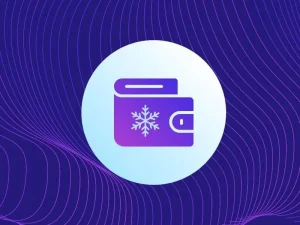Pulsechain Mainnet Finally Goes Live – What Exactly is PulseChain?
Pulsechain Launch News
There is significant speculation around the Pulsechain launch date as many within the Web3 community look forward to what the project has in store. And now it’s here.
Related Read: Pulsechain (PLS) Price Prediction 2023, 2025, 2030
The much-anticipated Pulsechain mainnet finally went live on May 13th, marking the beginning of the Pulsechain network. Less than 12 hours since Mainnet launch, investors have seen impressive statistics with nearly 130 transactions per block. And the Pulsechain & PulseX Telegrams hit record numbers of active users.

Following this, the forthcoming Pulsechain airdrop will see ERC-20 token balances and NFT holdings mirrored on the Pulsechain network. But what exactly is Pulsechain and how does it work?
Pulsechain is a full-state hard fork of Ethereum, the number one smart contract blockchain. The native PLS token plays a key role in supporting interoperability between various blockchain networks and facilitating transaction validation. The platform aims to reduce the computational strain on the Ethereum blockchain and create a cost-effective alternative for smart contract developers.
In this article, we’ll dive deep into the Pulsechain network. We’ll explore the origins of the project and its native token, PLS. Also, we’ll discuss the highly-anticipated Pulsechain airdrop, its DeFi token swap platform PulseX, and the so-called “sacrifice” period.
Find the Next Crypto Gem on BTCC
What is Pulsechain and How does It Work?
Pulsechain is a fast, open-source, public blockchain and a cost-effective hard fork of the Ethereum. It is the first hard fork to contain the complete state of the Ethereum blockchain, meaning that it holds records of every transaction, user account, and smart contract interaction on Ethereum.
While the rollout of Ethereum 2.0 reaches its final stages, the programmable blockchain space is becoming home to several Ethereum competitors. Pulsechain aims to solve the issues around Ethereum’s scalability by providing a low-cost alternative to the number-one smart contract blockchain network.
Ethereum gas fees can spike dramatically during periods of network congestion. When this occurs, transactions take longer to finalize, and the entire network slows down. PluseChain solves this by enhancing Ethereum’s speed and efficiency. Ethereum has a block time of 15 seconds. However, Pulsechain has a block time of three seconds, making it much faster and more scalable.
Furthermore, Pulsechain uses a fork of the Binance Smart Chain (BSC) Proof-of-Stake consensus mechanism, Parlia. However, the project has since moved toward a new Proof of Staked Authority (PoSA) consensus mechanism, which introduces native validator staking, rotation, and reward-slashing contracts.
PoSA combines Proof-of-Stake (PoS) and Proof-of-Authority (PoA) to offer a next-generation hybrid consensus model that overcomes many of the inefficiencies of legacy consensus mechanisms.
While the Proof-of-Work (PoW) consensus model promotes decentralization, it is often inefficient at preventing attacks for smaller networks. Also, PoW uses a lot of energy and has a large environmental footprint. PoA uses much less electricity than PoW and offers protection against 51% attacks. However, it is often criticized for inhibiting decentralization.
Delegated Proof-of-Stake (DPoS) is a variation of the classic PoS consensus mechanism used by prominent blockchains like BSC’s Parlia DPoS mechanism. DPoS is energy efficient and promotes decentralization by allowing token holders to elect validators. Pulsechain’s PoSA model shares these properties.
Additionally, Pulsechain’s PoSA model uses a validator rotation system to ensure the equitable distribution of activity among nodes. The Pulsechain community can replace validators every 24 hours according to the number of PLS tokens staked, which creates additional incentives for staking and securing the network.
At the time of writing, Pulsechain has 33 validator nodes throughout the network. Anyone can become a validator by staking 5000,000 PLS tokens. Validators earn a share of transaction fees from across the network. However, this initial staking deposit is non-refundable.
Interoperability between Pulsechain and Ethereum
The Pulsechain network is fully-interoperable with Ethereum. Anyone can buy and sell ETH and Ethereum tokens on Pulsechain. Plus, PLS is available as an ERC-20 token. Also, the interoperable PulseBridge allows users to bridge assets between multiple blockchain networks. PulseBridge works by allowing users to lock assets in a smart contract and issue assets like pETH at a 1:1 ratio.
Interoperability is an essential component of the Web3 landscape. In the past, blockchain networks and their communities have been segregated. However, interoperability allows blockchain development communities to collaborate and expedite innovation. Moreover, interoperability helps decentralized finance (DeFi) protocols access better liquidity and provide a better user experience for the users of all kinds of Web3 protocols.
What does Pulsechain Aim to Achieve?
Pulsechain aims to increase the value of the Ethereum network by sharing some of the network load and lowering gas fees. Also, the project aims to enrich existing Ethereum users and ETH holders by rewarding them with PLS token via the highly-anticipated Pulsechain airdrop.
Moreover, Pulsechain aims to lower the barrier to entry for Web3 by allowing users to transact for free using the “freemium” PLS token system. In addition, Pulsechain seeks to improve on the game theoretic dynamics of existing blockchain networks using a 0% inflation model for PLS token.
Moreover, because Pulsechain is a full-state Ethereum fork, it doesn’t start life as an empty blockchain. All token balances and smart contract data will be ready to go on the new Ethereum fork as soon as it launches.
PLS token
The PLS token is the native utility token of the Pulsechain network. It uses the PRC-20 token standard, a variation of Ethereum’s ERC-20 standard, and is essential for paying transaction fees throughout the network. Also, PLS holders can delegate their tokens to validators. By doing this, token holders help to secure the network. Plus, they earn a portion of transaction fees earned by validators.
Network validators can decide how they split transaction fee revenue with delegators. PLS token holders can decide to stake with validators offering higher rewards with lower authority scores or opt for the most authoritative validators and earn less. Pulsechain validators receive 75% of all PLS tokens generated by transaction fees. The remaining 25% is burned, lowering the circulating supply. Moreover, the PLS token will be used in community governance and on-chain voting when the final stages of the project roadmap are complete.
Furthermore, the PLS token will become available through various distribution mechanisms. Upon forking, the supply of PLS tokens will be significantly inflated to compensate those who participated in the sacrifice phase. However, the token-burning mechanism aims to bring the supply back to equilibrium as the project matures.
Sacrifice Period Explained
During the sacrifice period of the Pulsechain launch, users were encouraged to burn ETH and ERC-20 tokens in exchange for a greater number of PLS tokens in the future. This speculative fundraising model allowed early investors to support the project at the ground level and the broader ecosystem of Pulsechain dapps. The earlier an investor sacrifices tokens, the more tokens they receive. Also, sacrifice rates became increasingly favorable with larger deposits.
The sacrificial period ran for 17 days, concluding at midnight on August 2, 2021. Rates remained unchanged for the first five days of the sacrifice period before increasing by 5% per day for the last 14 days. Furthermore, investors could “sacrifice” their tokens by donating them to approved charities. This helped to raise $25 million for medical research in under a week.
Pulsechain Airdrop: Largest Airdrop in History?
An airdrop is when a blockchain or crypto project distributes free coins or tokens to its community. Airdrops are often seen as a marketing tool that allows new projects to give away free tokens to boost interest and engagement.
The Pulsechian airdrop is supposed to be the “largest airdrop in history” and will see free PLS-20 balances airdropped to reflect thousands of ERC-20 token balances. Pulsechain holds a full-state copy of all Ethereum token balances. This allows the upcoming Pulsechain airdrop to distribute PLS variations of various Ethereum tokens and NFTs.
Now that the Pulsechain blockchain is launched, it is expected that it won’t be long before the Pulsechain airdrop begins. Anyone with an Ethereum token balance in a non-custodial wallet will receive a 1:1 PLS token balance with no action required, giving users access to all their Ethereum tokens on Pulsechain. Any ETH held in a non-custodial wallet will be replaced with a PLS balance. However, all ERC-20 tokens will retain their original names.
PulseX Launched Together with Pulsechain
PulseX, Pulsechain’s flagship DeFi token swap platform, also went live on the same day. PulseX network provides participants with access to Defi features like AMMs, liquidity pools, and yield farming.
Pulsechain’s sacrifice period raised funds were partly contribute to the development and launch of PulseX. Investors who sacrificed tokens will receive an allocation of PLSX tokens, the native utility token of the PulseX platform. The project has a fantastic start. Within less than 12 hours since launch, there were 3 BILLION $PLSX burnt on the Pulsechain mainnet, and should be well into a more staggering figure by the end of the weekend.
Headed by HEX founder Richard Heart, PulseX is a clone of Uniswap, the leading DEX on Ethereum. However, it promises faster transactions and lower fees. Nonetheless, it is yet to be seen how well the PluseX DEX will perform and if it will garner the same interest from DeFI users as Uniswap. Moreover, the supply of PLSX tokens is informed by the value of tokens sacrificed by investors during the sacrifice period.
Conclusion
The Pulsechain network is the first full-state hard fork of the Ethereum blockchain. It aims to support the Ethereum network and all decentralized applications (Dapps) built on Ethereum by lowering the strain on the network and reducing gas fees. Reducing gas fees and minimizing congestion helps Ethereum to scale without friction. By stabilizing gas fees throughout the Web3 ecosystem, Pulsechain aims to promote the mass adoption of blockchain technology and smart contracts.
In addition, smart contract developers can easily migrate or restart Ethereum Dapps on Pulsechain. As a faster and cheaper alternative to the leading smart contract blockchain, Pulsechain is helping to foster innovation and collaboration on Web3 while complementing the existing architecture and community of the Ethereum network.
With the launch of Pulsechain, many investors are monitoring the Pulsechain airdrop closely. BTCC will keep you updated with the token airdrop once it is available.
If you’re looking for additional ideas about potential future Pulsechain price moves, check out our Pulsechain Price Prediction 2023, 2025, 2030.
|
BTCC Starter Rewards |
Recommended for you:
PulseX Price Prediction 2023, 2025, 2030: Can PulseX Reach $1?
Pulsechain (PLS) Launch: Everything You Need to Know
XRP Price Prediction $500: Can XRP Reach $500 Dollars?
Will Pi Network Ever Launch? What Stage is Pi Network Now?
Is Pi Network Legit Or Scam: Pi Cryptocurrency Real or Fake?
Pi Coin Price Prediction: Will Pi Ever Be Worth Money?
Luna Classic Price Prediction: Will Luna Classic Reach $1?
Pikamoon Price Prediction 2023, 2025, 2030
How to Buy Pikamoon? Is It a Good Buy?
Pepe Price Prediction 2023, 2025, 2030
Gold Price Predictions for Next 5 Years
Silver Price Predictions for Next 5 Years
Ethereum Price Prediction 2023, 2025, 2030
Bitcoin (BTC) Price Prediction 2023, 2024, 2025, 2030
Sui (SUI) Price Prediction 2023, 2025, 2030
Cardano (ADA) Price Prediction 2023, 2025, 2030
Milady Meme Coin (LADYS) Price Prediction 2023, 2025, 2030
HBAR Price Prediction 2025, 2030
Arbitrum (ARB) Price Prediction 2023, 2025, 2030
Stellar Lumens (XLM) Price Prediction 2023, 2025, 2030
Polkadot (DOT) Price Prediction 2023, 2025, 2030
Gala (GALA) Price Prediction 2023, 2025, 2030
VeChain (VET) Price Prediction 2023, 2025, 2030
Wild Cash App: Answer Quiz to Earn $HOOK
Can Solana Reach $1,000? Solana Price Prediction
Litecoin (LTC) Price Prediction 2023, 2025, 2030
The Sandbox Price Prediction 2025, 2030
Polygon (MATIC) Price Prediction 2023, 2025, 2030
Core DAO Airdrop is Now Available, How to Claim It?
Core DAO (CORE) Price Prediction 2023, 2025, 2030
JasmyCoin (JASMY) Price Prediction
Flow (FLOW) Price Prediction 2023, 2025, 2030 — Is FLOW a Good Investment?
Ethereum Classic (ETC) Price Prediction 2023, 2025, 2030
Aragon (ANT) Price Prediction 2023, 2025, 2030 — Will ANT Hit $10?
MultiversX (EGLD) Price Prediction 2023, 2025, 2030 — Will EGLD Hit $1000?
ETHPoW (ETHW) Price Prediction 2023,2025,2030 — Is ETHW a Good Investment?
Hooked Protocol (HOOK) Price Prediction 2023,2025,2030 —Is HOOK a Good Investment?
Klaytn (KLAY) Price Prediction 2023, 2025, 2030 — Is KLAY a Good Investment?
LooksRare (LOOKS) Price Prediction 2023,2025,2030 — Is LOOKS a Good Investment?
Ren (REN) Price Prediction 2023,2025,2030 — Is REN a Good Investment?
Storj (STORJ) Price Prediction 2023,2025,2030 — Is STORJ a Good Investment?
Theta Network (THETA) Price Prediction 2023, 2025, 2030 — Will THETA Hit $100?
Nem (XEM) Price Prediction 2023, 2025, 2030 — Will XEM Hit $1?
Monero (XMR) Price Prediction 2023,2025,2030 — Is XMR a Good Investment?
Render (RNDR) Token Price Prediction 2023, 2025, 2030 — Will RNDR Hit $100?
Ravencoin (RVN) Price Prediction 2023,2025,2030 — Will RVN Hit $1?
Zilliqa (ZIL) Price Prediction 2023,2025,2030 — Is ZIL a Good Investment?
Pepe (PEPE) Price Prediction 2023, 2025, 2030
AiDoge Price Prediction 2023, 2025, 2030 — Is AiDoge a Good Investment?
Sui (SUI) Price Prediction 2023, 2025, 2030
Floki Inu (FLOKI) Price Prediction 2023, 2025, 2030 — Is FLOKI a Good Investment?
SingularityNet (AGIX) Price Prediction 2023,2025,2030 – Is AGIX a Good Investment?
Stella (ALPHA) Price Prediction 2023, 2025, 2030
Ankr (ANKR) Price Prediction 2023, 2025, 2030 — Is ANKR a Good Investment?
ARPA (ARPA) Price Prediction 2023, 2025, 2030
Astar (ASTR) Price Prediction 2023, 2025, 2030
Balancer (BAL) Price Prediction 2023, 2025, 2030
Band Protocol (BAND) Price Prediction 2023, 2025, 2030
Bella Protocol (BEL) Price Prediction 2023, 2025, 2030
BinaryX (BNX) Price Prediction 2023, 2025, 2030 — Will BNX Hit $100?
Please be aware that all investments involve risk, including the potential loss of part or all of your invested capital. Past performance is not indicative of future results. You should ensure that you fully understand the risks involved and consider seeking independent professional advice suited to your individual circumstances before making any decision.
For any inquiries or feedback regarding this article, please contact us at: [email protected]















